GENERAL DATA
Plant Parts: Root, bark, leaves, fruit, sap
Cultivation Mode: Wild Collection/ Cultivated
In Manufacturing: Pharmaceutical, silk, perfumery, food, confectionery, herbal tea, alcoholic drink, non-alcoholic drink.
🍇 Dried White Mulberry Fruit (Morus alba L.) – Industries, Uses & Applications
The dried fruits of Morus alba (White Mulberry) are soft, chewy, and naturally sweet—rich in resveratrol, flavonoids, vitamin C, iron, and dietary fiber. With rising demand for natural, functional, and traditional foods, dried white mulberries are gaining popularity across food, nutraceutical, herbal, and cosmetic industries.
🏥 1. Pharmaceutical & Herbal Medicine Industry
Traditionally used in Chinese, Persian, and Ayurvedic medicine, dried white mulberries are considered a gentle tonic and adaptogen.
🩺 Applications:
-
Mild laxative and blood tonic
-
Helps with anemia, fatigue, tinnitus, and dizziness
-
Supportive in detox regimens and liver health
✅ Form: Whole dried fruit, infused decoctions, powders, capsules
🥗 2. Nutraceuticals & Health Food Industry
Dried white mulberries are rich in 1-deoxynojirimycin (DNJ), a compound that inhibits sugar absorption, making them valuable in diabetic-friendly and functional nutrition.
🍃 Applications:
-
Functional snacks for diabetes support
-
High-fiber, low-GI sweetener alternative
-
Added to superfood powders, muesli, or trail mixes
✅ Form: Dried fruit, fruit powder, fruit extract
🍭 3. Food & Beverage Industry
Naturally sweet and chewy, dried mulberries are used as a healthy substitute for raisins or sugar in culinary and beverage applications.
🍽️ Applications:
-
Added to granola, yogurt, and baked goods
-
Used in natural energy bars, fruit snacks, and desserts
-
Steeped into herbal teas and infused water
✅ Form: Whole dried berries, chopped pieces, rehydrated fruit, fruit molasses
🧴 4. Cosmetic & Skincare Industry
Due to their antioxidant and brightening properties, dried mulberry fruit extracts are used in skin care products for:
💆 Applications:
-
Anti-aging and firming serums
-
Skin brightening and tone-correcting creams
-
Face masks for hydration and glow
✅ Form: Fruit extract, dried powder, oil infusion
🌿 5. Traditional & Ethnic Medicine Markets
Dried white mulberries are a staple in Persian, Chinese, and Mediterranean herbal shops, offered for both dietary and medicinal purposes.
🛒 Applications:
-
Brewed into sweet herbal infusions
-
Used in blood-strengthening and liver-cleansing tonics
-
Featured in folk formulas for longevity and fatigue
✅ Form: Whole dried fruit, blended with herbs, infused syrups
✅ Summary of Key Applications
| Industry | Common Uses |
|---|---|
| Pharmaceutical & Herbal | Blood tonic, detox support, traditional remedies |
| Nutraceuticals | Functional snacks, diabetic support, antioxidant formulations |
| Food & Beverage | Natural sweetener, trail mixes, health bars |
| Cosmetics & Skincare | Skin brightening, anti-aging blends, antioxidant serums |
| Traditional & Ethnic Use | Liver & kidney tonics, energy and stamina boosters |
✳️ Key Features of Dried White Mulberry Fruit
-
Naturally sweet and chewy – great sugar alternative
-
Rich in resveratrol, DNJ, vitamin C, and iron
-
Traditional use as a blood and liver tonic
-
Excellent source of antioxidants and fiber
-
Popular in natural and diabetic-friendly diets
🍃 White Mulberry Leaves (Morus alba L.) – Industries, Uses & Applications
White Mulberry leaves have been highly valued in Traditional Chinese Medicine (TCM), Persian medicine, and modern herbalism for their hypoglycemic, antioxidant, and anti-inflammatory properties. Rich in DNJ (1-deoxynojirimycin), flavonoids, and alkaloids, they are also the primary food source for silkworms—making them economically important in both healthcare and textile industries.
🏥 1. Pharmaceutical & Herbal Medicine Industry
White mulberry leaves are widely used for blood sugar control, liver support, and as a cooling herb in traditional medicine systems.
🩺 Applications:
-
Diabetes and prediabetes support
-
Cholesterol-lowering and cardiovascular health
-
Used in liver-cleansing and detox formulas
-
Antiviral, antimicrobial, and anti-inflammatory uses
-
Mild expectorant and respiratory tonic in traditional decoctions
✅ Form: Dried leaves, tea blends, tinctures, standardized extracts, capsules
🍵 2. Nutraceuticals & Functional Foods
Rich in DNJ and polyphenols, mulberry leaves are now widely used in natural sugar-blocking supplements and weight management products.
🧃 Applications:
-
Functional teas for glucose control
-
Active ingredient in slimming supplements
-
Included in natural cholesterol-lowering blends
✅ Form: Dried leaf tea, capsules, leaf powder, standardized extract (DNJ)
🧶 3. Silkworm Rearing & Textile Industry
The leaves of Morus alba are essential in sericulture (silk farming) as the exclusive food of silkworms (Bombyx mori), making this plant a cornerstone of silk production worldwide.
🐛 Applications:
-
Feeding Bombyx mori in commercial silk farms
-
Organic or hydroponically grown leaf supply for high-grade silk production
✅ Form: Fresh or dried whole leaves (unsprayed, pesticide-free)
🍃 4. Cosmetic & Skincare Industry
White mulberry leaves contain anti-aging, anti-inflammatory, and melanin-inhibiting compounds. These are used in natural cosmetics for skin brightening and calming.
💆 Applications:
-
Brightening serums and skin-tone correctors
-
Anti-acne and anti-inflammatory lotions
-
Antioxidant creams and under-eye treatments
✅ Form: Leaf extract, hydrosol, dried powder for facial masks
🌿 5. Traditional & Ethnobotanical Medicine
Used for centuries in TCM and Unani medicine, white mulberry leaves were prescribed for fevers, coughs, red eyes, and skin disorders.
🛒 Applications:
-
Cooling tea for fever and detox
-
Combined with other herbs for respiratory infections
-
Used topically for eczema and boils
✅ Form: Dried leaves, decoction packs, folk medicine kits
✅ Summary of Key Applications
| Industry | Common Uses |
|---|---|
| Pharmaceutical & Herbal | Blood sugar regulation, liver support, respiratory tonic |
| Nutraceuticals & Functional | Diabetes supplements, cholesterol & weight control teas |
| Silk & Textile | Essential feed for silkworms in silk production |
| Cosmetic & Skincare | Brightening, antioxidant, anti-inflammatory products |
| Traditional & Ethnic Medicine | Detox, fever relief, skin problems, eye care |
✳️ Key Features of White Mulberry Leaves
-
Rich in 1-deoxynojirimycin (DNJ) – a natural sugar absorption blocker
-
Contains flavonoids, alkaloids, chlorogenic acid, and rutin
-
Used in diabetes management, detox, and liver health
-
Historically considered a cooling and purifying herb
-
Critical for silkworm feeding and silk industry
🪵 White Mulberry Root Bark (Morus alba L.)
(Also called: Sang Bai Pi in Traditional Chinese Medicine)
White Mulberry Root Bark is one of the most important parts of the Morus alba plant in Traditional Chinese Medicine (TCM) and herbal pharmacopoeia, distinct from the more well-known fruit and leaves. It’s primarily used for respiratory health, detoxification, and fluid regulation.
🏥 1. Pharmaceutical & Herbal Medicine Industry
The root bark contains flavonoids, stilbenes, alkaloids, moran A, kuwanon C, and other phenolic compounds, giving it potent anti-inflammatory, antimicrobial, diuretic, and anti-tussive (cough-suppressing) effects.
🩺 Applications:
-
Expectorant and cough relief (especially in TCM for bronchial congestion)
-
Anti-inflammatory and mucolytic actions
-
Helps reduce edema and water retention
-
Used as a mild hypotensive (blood pressure-lowering) herb
-
Considered a detoxifying agent for lung and skin issues
✅ Form: Dried root bark slices, granules, decoction pieces, tinctures, extracts
🌿 2. Traditional Chinese Medicine (TCM) & Eastern Herbalism
In TCM, Sang Bai Pi is classified as a “cooling” and “lung-clearing” herb, often combined with other botanicals like Mahuang (Ephedra) or Licorice Root for coughs and asthma.
🌬️ TCM Functions:
-
Clears heat from the lungs
-
Stops coughing and wheezing
-
Promotes urination to reduce edema
-
Mildly supports skin detox
✅ Form: Bulk root bark, traditional decoction kits, classic formulas (e.g., Ma Xing Shi Gan Tang)
🧴 3. Cosmetic & Dermatological Industry
Due to its antimicrobial and depigmenting effects, mulberry root bark extract is increasingly used in natural skincare formulations.
💆 Applications:
-
Used in whitening creams and melanin-inhibiting products
-
Anti-acne and blemish-reducing lotions
-
Soothing, anti-inflammatory skincare masks
✅ Form: Standardized extract, tincture, powdered root bark
🌱 4. Nutraceutical & Functional Herbal Products
Though not as common as the leaf in modern supplements, white mulberry root bark appears in respiratory support and detox teas, especially in Eastern herbal blends.
🧃 Applications:
-
Lung-cleansing herbal teas
-
Detoxifying blends for skin and edema relief
-
Formulations targeting seasonal coughs and asthma-like symptoms
✅ Form: Dried bark, powdered herb, capsule formulations
✅ Summary of Key Applications
| Industry | Common Uses |
|---|---|
| Pharmaceutical & Herbal | Cough relief, lung detox, edema support, hypotensive |
| Traditional Chinese Medicine | Lung heat clearing, asthma, diuretic, cooling effect |
| Cosmetic & Dermatological | Brightening creams, blemish lotions, acne formulas |
| Nutraceuticals & Herbal Teas | Respiratory teas, detox blends, anti-inflammatory supplements |
✳️ Key Features of White Mulberry Root Bark
-
Known as Sang Bai Pi in TCM
-
Contains stilbenes, flavonoids, alkaloids, resveratrol-type compounds
-
Highly regarded for lung-related disorders, especially in phlegmy coughs
-
A gentle diuretic—helps reduce swelling and support kidney-lung axis
-
Active in skin-brightening cosmetic applications
🍃 Comparison of White Mulberry Fruit vs Leaves vs Root Bark
| Feature / Part | Dried White Mulberry Fruit | White Mulberry Leaves | White Mulberry Root Bark (Sang Bai Pi) |
|---|---|---|---|
| Botanical Part | Mature dried fruit (berry) | Young or mature leaves | Outer bark of the root |
| Color & Texture | Golden to dark brown; chewy, raisin-like | Green, papery when dried | Pale brown or beige, fibrous bark strips |
| Taste Profile | Sweet, mild | Mildly bitter, grassy | Bitter, slightly sweet aftertaste |
| Main Phytochemicals | Resveratrol, anthocyanins, flavonoids, vitamins | DNJ (1-deoxynojirimycin), flavonoids, chlorogenic acid | Stilbenes, flavonoids, moran A, kuwanon C, alkaloids |
| Pharmaceutical/Herbal Uses | Antioxidant, anti-aging, supports liver & vision | Anti-diabetic, antihypertensive, cholesterol-lowering | Expectorant, diuretic, lung-clearing, anti-inflammatory |
| Traditional Use (TCM/Herbalism) | Blood tonifier, longevity tonic, dry cough remedy | Balances blood sugar, clears liver heat, calms wind | Clears lung heat, relieves edema and wheezing |
| Modern Applications | Functional foods, energy snacks, supplements | Diabetic support teas, capsules, animal feed | Respiratory blends, detox teas, skin care formulations |
| Culinary Use | Yes – snacks, jams, syrups | Limited – as tea blend or powder | No (non-edible in culinary terms) |
| Cosmetic Industry Use | Antioxidant in natural skincare | Skin-soothing, brightening agents | Whitening creams, acne treatment, anti-pigmentation blends |
| Nutraceutical Use | Anti-fatigue and antioxidant supplements | Blood sugar control and immune-support capsules | Respiratory and detox formulas |
| Main Industry Sectors | Food, nutraceutical, traditional medicine | Nutraceutical, herbal teas, veterinary | TCM, herbal, cosmetic, wellness |
| Form Available | Dried whole fruit, powder, syrup | Dried leaf, powder, tea bags, capsules | Dried bark slices, powder, tincture, extract |
🧩 Summary by Function
| Function | Fruit | Leaves | Root Bark |
|---|---|---|---|
| Antioxidant | ✅ | ✅ | ✅ |
| Blood sugar regulation | ❌ | ✅ | ⚠️ (indirect via diuretic action) |
| Respiratory health | ⚠️ (mild use in dry cough) | ❌ | ✅✅✅ |
| Edema & detox | ❌ | ❌ | ✅✅ |
| Culinary use | ✅✅✅ | ⚠️ (tea use only) | ❌ |
| Skincare use | ✅ (anti-aging) | ✅ (brightening) | ✅ (whitening & blemish control) |
⭐ Key Notes:
-
Fruit is ideal for food and antioxidant-rich herbal snacks.
-
Leaves are dominant in metabolic health, especially blood sugar and lipids.
-
Root Bark (Sang Bai Pi) is prized for lung detox, cough relief, and cosmetic depigmentation.
PRODUCT NAME IN DIFFERENT LANGUAGES
Persian Name: توت، توت سفید/ Tout, Toot Sefid
German Name (Deutschland, Austria, Switzerland): Getrocknet Weiße Maulbeeren, Maulbeere weiß getrocknet
French Name (France, Belgium, Switzerland, Quebec): Mûrier Blanc, Mûrier Commun, Mûrier de Chine
HARVEST CALENDAR
Feb
Mar
Apr
May
Jun
Jul
Aug
Sep
Oct
Nov
Dec
To order dried Mulberries, please contact us.
About Morus Alba
It is a tree whose height reaches 20 meters and its diameter reaches 1 meter. The bark of its trunk is furrowed, yellowish gray, its leaves are different, some with smooth and clawed sides and some heart-shaped and with serrated sides, the color of its leaves is bright green and shiny with long petioles.
Its fruit is compound, cylindrical with pedicel. The length of the fruit is 2 to 4 cm, its color is creamy white, and its taste is sweet. White Mulberry leaves are used to raise and feed silkworms in spring, and used as animal fodder in autumn.
Its wood has wide uses in carpentry, for example, it is used to make string instrument.
White Mulberry fruit is sweet, pleasant and laxative.
Morus Alba Chemical Constituents
Morus alba contains abundant bioactive compounds, including phenolic acids, flavonoids, flavonols, anthocyanins, macronutrients, vitamins, minerals, and volatile aromatic compounds. Its fruits and leaves contain significant amounts of quercetin, rutin, and apigenin; ferulic, chlorogenic, and protocatechuic acids are also the significant compounds in fruits. These natural bioactive compounds hold potent biological activities proven to exhibit excellent pharmacological effects against various diseases.
These include antioxidative, diuretic, antiobesity, hypoglycemic, hypotensive, anticholesterol, antidiabetic, and antimicrobial properties. Moreover, the high quantity of phenolic compounds also contributes to M. alba’s functional properties in food applications. For example, the flavonoids and caffeoylquinic acids in M. alba could benefit as colorants, flavorants, food fortificants, antioxidants, preservatives, and antimicrobial agents against bacteria and fungi, all of which are essential in the food industry. Simultaneously, their anthocyanins could act as natural antioxidative food colorants.
That aside, M. alba as a whole also has a high nutraceutical value due to its low lipid value and high levels of protein, carbohydrates, fiber, organic acids, vitamins, and minerals that are comparable to other berries. To be precise, M. alba contains approximately 3.6 g/100 g DW crude fiber and 19.4% protein content, giving it great potential in contributing to the recommended dietary allowance (RDA) of proteins. Moreover, macroelements such as Ca, N, K, and Mg were abundantly found in both leaves and fruit, with low Na values of 0.01 g/100 g DW, making them suitable for low-sodium diets.
As a result of public and industry interest in the importance of functional foods in disease prevention, a rise in active food-market exploitation has occurred. With their demonstrated nutrition and health benefits, M. alba leaves and fruit can be considered as suitable ingredients to contribute to a broader application of functional foods. M. alba products can widely be found in the market, including mulberry powder, dried fruit, juices, jellies, jams, marmalade, ice cream, desserts, candies, pastes, and wine.
However, its potential is limited in producing food products, and its efficiency as a functional food product still needs to be discovered. Therefore, there are still many possibilities to be explored, as it is imperative to sustain and preserve M. alba health benefits in food. This review paper aims to discuss the nutritional and phytochemical properties of M. alba leaves, fruit, and seeds and their potential as food ingredients for developing novel and functional foods to enrich human nutrition.
People consume mulberry species in various countries due to their nutritiousness, deliciousness, nontoxicity, and abundant active benefits. The leaves of M. alba species are rich in protein, carbohydrates, fiber, and vitamins, especially ascorbic acid and β-carotene. Studies have also found that the leaves contain a high amount of important minerals such as calcium (Ca), potassium (K), magnesium (Mg), zinc (Zn), and many others.
Moreover, according to Sánchez-Salcedo et al. M. alba leaves possessed high iron (Fe) values (119.3–241.8 mg/kg) and a low level of sodium (0.01 mg/100 g), making them a suitable diet material for sodium-restricted individuals. The leaves also contain a considerable amount of organic acids, including citric acid (0.26–3.85 mg/g FW), malic acid (7.37–12.49 mg/g FW), tartaric acid (0.085–0.212 mg/g FW), succinic acid (1.02–5.67 mg/g FW), lactic acid (0.29–0.83 mg/g FW), fumaric acid (0.058–0.39 mg/g FW), and acetic acid (0.029–0.1 mg/g FW), which contribute to the potential health benefits of M. alba leaves.
The same nourishing richness is in M. alba fruit, with a protein content higher (10.15–13.33%) than other mulberry species. A study by Owon showed a higher protein value of M. alba fruit (12.98%) as compared to black mulberry (10.85%), golden berry (9.16%), and strawberry (7.65%). Their great protein amount has proven their capability in contributing to protein’s recommended dietary allowance (RDA), which is 0.8 g/kg of body weight. A considerable percentage of minerals, including N, P, K, Mg, Mn, Ca, Zn, Cu, Fe, and Se, were observed in M. alba fruits, while a higher ascorbic acid value was obtained from M. alba fruit (22.4 mg/100 g) than the M. rubra species (19.4 mg/100 g).
Flavonoids are essential bioactive compounds with excellent antioxidant properties that are found in M. alba leaves. Thabti et al. reported the presence of three newly identified compounds (kaempferol-7-O-glucoside, quercetin-3-O-rhamnoside-7-O-glucoside, and quercetin 3-O-β-glucoside-7-O-α-rhamnoside), along with 10 other known compounds (1-caffeoylquinic acid, 5-caffeoylquinic acid, 4-caffeoylquinnic acid, caffeic acid, rutin, quercetin-3,7-d-O-β-d-glucopyranoside, quercetin-3-O-glucoside, quercetin-3-O-(6-malonyl)-β-d-glucopyranoside, kaempferol-3-O-glucopyranosyl-(1,6)-β-d-glucopyranoside, and kaempferol-3-O-(6-malonyl)glucoside). These findings were supported by Sánchez-Salcedo et al. and Memon et al.
They found chlorogenic, gallic, vanillic, p-hydroxybenzoic, syringic, p-coumaric, protocatechuic, ferulic, and m-coumaric acids as the leaves’ major phenolic acids.
Several new compounds, including flavan derivatives (moracinflavan A-G [26]) and 2-arylbenzofuran derivatives (moracinfurol A and B) were obtained from M. alba leaves. The same significant phytochemical groups—alkaloids, phenolic, flavonoids, tannin, and terpenes—were isolated from leaves of two different maturities, with mature leaves containing higher 1-deoxynojirimycin (DNJ) and secondary metabolite values. However, only simple terpenes were isolated via pyrolysis gas chromatography–mass spectrophotometry (Py/GC/MS), possibly due to terpenes’ lack of a polar group, which makes them more easily volatile compared to alkaloids and phenolics.
Further analysis with different pyrolysis temperatures might isolate more compounds from M. alba leaves. Ultimately, rutin, apigenin, and quercetin were the three highest bioactive constituents among the major phytochemical classes of M. alba leaves. In addition, the presence of alkaloids, carbohydrates, fatty acids, phytosterols, glycosides, proteins, tannins, gums, and amino acids were also observed in M. alba leaves in five different solvents.
M.alba fruit is not commonly integrated into traditional medicine, possibly due to its seasonal production and the limited dissemination of its health benefits. However, the increasing interest in analyzing, isolating, and quantifying M. alba fruit phytochemicals has led to reports of their richer phenolic- and volatile-compound content, as well as better antioxidant capacity than other berry species like blueberry, strawberry, blackberry, and raspberry.
Previously, Wang et al. found a total of 17 phenolic compounds in the fruits, consisting of cinnamic acid derivatives (0.36–1.29 mg/g DW), flavonols (0.07–0.36 mg/g DW), anthocyanins (not quantified), and benzoic acid derivatives (0.81–2.33 mg/g DW); while caffeoylquinic acids (CQAs) lower than in the leaves were detected (0.16–3.62 mg/g DW and 6.78–8.48 mg/g DW, respectively).
Calín-Sánchez et al. [40] found 35 volatile compounds and categorized them into aldehydes, esters, ketones, benzene terpenes, and oxygenated terpenes. Moreover, the presence of bioactive compounds in M. alba fruit, including rutin (293.5 μg/g), chlorogenic acid (226.9 μg/g), caffeic acid (17.2 μg/g), quercetin (15.2 μg/g), gallic acid (8.9 μg/g), kaempferol (5.8 μg/g), and apigenin (3.5 μg/g), has previously been detected.
The fruit’s major fatty acids were also reported, including linoleic acid (57.26%), palmitic acid (22.42%), oleic acid (10.5%), stearic acids (4.27%), and myristic acid (0.98%). Meanwhile, in a more recent study by Xu et al., three new compounds were isolated: (2S,2″S)-2,3,8,9-tetrahydro-5-hydroxy-8-(1-methylethenyl)-2-(4-hydroxyphenyl)-4H-furo2,3-h]-1-benzopyran-4-one; (1″R,2″R)-4-(2-formyl-1H-pyrrol-1-yl)-1-(2-hydroxy-1-methylpropoxy)-butanoate; and (4′S,5′R)-1-[(Tetrahydro-4-hydroxyl-5-oxo-2-furanyl)methyl]-2,4(1H,3H)-pyrimidinedione.
Zhang et al. suggested flavonols, flavonoids, anthocyanins, hydroxynamic acids, and benzoic acids as the significant polyphenol composition in M. alba fruit. The fruit’s polyphenol composition was significantly influenced by their maturity stages. The brackish fully ripe M. alba fruit extract contained higher total sugar and anthocyanins, while the ripe red fruit contained higher ß-carotene and ascorbic acid.
This is because sugar acts as a precursor in synthesizing anthocyanins, hence their higher value in mature fruit. A study by El-Baz et al. found that types of solvent influenced the extraction of phytochemicals.
Ethanol (EtOH) extract was the most efficient solvent, as 18 compounds were isolated, mostly esters (96.32%), followed by dichloromethane (DCM) and ethyl acetate (EtOAC) fractions with a total of 12 compounds. The rich reports on M. alba fruit’s bioactive-compound content suggest its excellent potential for functional food-product development.
White Mulberry Temperament
It is in the first degree of hot and moist.
Health Benefits of White Mulberry
White Mulberry fruit is moisturizing for the brain, liver tonic, lung tonic, fattening, stomachic and kidney fat producer.
White Mulberry improves liver and spleen conditions, makes pure blood and is useful for catarrh, smallpox, and typhoid.
Drinking White Mulberry syrup is beneficial for sore throat. Eating bread made from White Mulberry flour is fattening.
Gargling the decoction of White Mulberry leaves improves diphtheria, sore throat and tooth and gum pain.
Drinking the decoction of the inner bark of the trunk of this tree or the cortex of its root removes black bile well through diarrhea.
If you boil 30 grams of pounded White Mulberry root in 350 grams of water until a quarter of the water remains, then strain it and add some sugar and honey to it, drinking it is an antidote to poisons and is beneficial for pleurisy, insanity, and back pain.
In China, root cortex, young branches, leaves and fruit are used in traditional medicine. Its roots are taken out of the soil in winter and washed and cleaned well. Longitudinal cracks are given to it, and as a result, its skin is easily separated, and they are packed and dried in the sun. The best type of White Mulberry root cortex is clean, white and flexible.
There are two ways to prepare White Mulberry root cortex before eating it in China: the first method is to wash the dried root cortex and soak it in water until it becomes soft, then cut it into pieces and fry it. The second method is to take 50 kg of dry root cortex, mix it with boiling water and 15 kg of honey and put it on a gentle flame until the cortex turn yellow, then take them out and spread them to dry.
The White Mulberry root cortex prepared in this way is sweet and cooling and is used to treat various diseases of the respiratory system and also for dropsy, especially to treat high blood pressure and numbness in the hands and feet.
The juice of the young branches and its leaves are also used to relieve numbness in the hands and feet. White Mulberry leaves that are picked after frost in December and January have a better effect.
White Mulberry leaves taste bitter and sweet after chewing. It is cooling and antipyretic. It cools the blood and suppresses its inflammation and makes the eyes bright and is prescribed in cases of severe cold, cough, redness and eye inflammation. The decoction of the leaves is useful for removing eye swelling. At the same time, drinking a decoction of its leaves and young branches is a blood purifier and haemapoietic.
The White Mulberry fruit is used for all cases where the root cortex is used with the same properties, in addition, it is anti-poisoning and is also used to treat rheumatism. The young branches, the young stems, the fruit and the cortex of its root, all of them are tonic, invigorating, diuretic and are useful for loosen chest congestion, relieving cough, asthma, tuberculosis complications, and other chest discomforts and rheumatism. Its fruit quenches thirst.
White and sweet Mulberry is hot and moist according to traditional medicine sages and freshen the brain. It’s good for the liver. It is good for strengthening sexual power. It is diuretic and laxative and is beneficial for rubella.
White Mulberry Dosage
Fresh White Mulberry from 60 to 120 grams.
Side Effects of Silkworm Mulberry
It is harmful for hot temperament people. Excessive consumption of White Mulberry causes headaches. White Mulberry quickly turns into the predominant mucus of the stomach, so it is harmful to eat it excessively.
White Mulberry Modifiers
Sekanjebin and Goleghand.
Dried White Mulberry Fruit (Morus alba L.) – Nutrition Facts
General Description
Dried white mulberry fruits (Morus alba L.) are naturally sweet, chewy, and nutrient-rich berries traditionally used in many cultures as both a food and medicinal ingredient. They are a natural source of energy, dietary fiber, and various plant-based antioxidants, especially flavonoids and anthocyanins. Mulberries are also valued for their vitamin C, iron, and calcium content, as well as for compounds that support blood sugar regulation and cardiovascular health.
Nutritional Composition (per 100 g, dried fruit)
| Nutrient | Amount | Unit |
|---|---|---|
| Energy | 339 | kcal |
| Carbohydrates | 75.6 | g |
| Sugars (naturally occurring) | 38.1 | g |
| Dietary Fiber | 14.6 | g |
| Protein | 4.2 | g |
| Fat (total) | 1.0 | g |
| Saturated Fat | 0.1 | g |
| Monounsaturated Fat | 0.3 | g |
| Polyunsaturated Fat | 0.6 | g |
| Water | 8.1 | g |
Mineral & Micronutrient Content (per 100 g)
| Mineral | Amount | Unit |
|---|---|---|
| Calcium (Ca) | 183 | mg |
| Iron (Fe) | 4.3 | mg |
| Magnesium (Mg) | 44 | mg |
| Phosphorus (P) | 99 | mg |
| Potassium (K) | 1223 | mg |
| Sodium (Na) | 11 | mg |
| Zinc (Zn) | 0.8 | mg |
| Copper (Cu) | 0.2 | mg |
| Manganese (Mn) | 0.7 | mg |
| Selenium (Se) | 1.5 | µg |
Vitamin Content (per 100 g)
| Vitamin | Amount | Unit |
|---|---|---|
| Vitamin A (RAE) | 1 | µg |
| Vitamin C (Ascorbic acid) | 36.4 | mg |
| Vitamin E (α-tocopherol) | 1.2 | mg |
| Vitamin K | 10.1 | µg |
| Thiamine (B1) | 0.14 | mg |
| Riboflavin (B2) | 0.28 | mg |
| Niacin (B3) | 1.5 | mg |
| Vitamin B6 | 0.20 | mg |
| Folate (B9) | 6 | µg |
| Pantothenic acid (B5) | 0.5 | mg |
Phytochemical Composition
-
Flavonoids: Rutin, quercetin, kaempferol
-
Anthocyanins: Cyanidin-3-glucoside (in white mulberries, levels are lower than in black/purple varieties)
-
Polyphenols: Chlorogenic acid, caffeic acid
-
Resveratrol: Known for cardiovascular protection
-
Other plant compounds: Morin, mulberroside A
Health Benefits
-
Blood Sugar Regulation – Contains 1-deoxynojirimycin (DNJ), which helps slow carbohydrate absorption.
-
Heart Health – Potassium and polyphenols support blood pressure and vascular function.
-
Immune Support – Rich in vitamin C and antioxidant compounds.
-
Digestive Health – High fiber content supports gut health and regularity.
-
Bone Health – Provides calcium, magnesium, and vitamin K.
Safety & Usage Notes
-
Generally safe for most people when consumed in normal dietary amounts.
-
People with low blood sugar or those on glucose-lowering medications should monitor intake due to potential mild hypoglycemic effects.
-
As with all dried fruits, moderate consumption is recommended to avoid excessive sugar intake.
Storage
-
Store in an airtight container in a cool, dry place away from direct sunlight.
-
For extended shelf life, refrigeration is recommended.
Dried White Mulberry Leaves – Morus alba L.
General Description
Dried White Mulberry Leaves, obtained from Morus alba L., are a well-known herbal material used traditionally in East Asian and Mediterranean medicine. Rich in bioactive compounds, they are valued for their antioxidant, antidiabetic, and anti-inflammatory effects. These leaves are used in teas, herbal infusions, extracts, and powdered supplements. They have a naturally mild, slightly bitter, grassy taste and are often employed in functional foods and herbal remedies.
Nutritional Composition (per 100 g dried leaves, approximate values)
| Component | Amount |
|---|---|
| Energy | 270 kcal |
| Protein | 19.0 g |
| Total Fat | 4.0 g |
| – Saturated Fat | 0.9 g |
| – Monounsaturated Fat | 0.7 g |
| – Polyunsaturated Fat | 2.0 g |
| Carbohydrates | 49.0 g |
| – Dietary Fiber | 21.0 g |
| – Sugars | 9.0 g |
| Moisture | 7.0 g |
| Ash | 8.0 g |
Mineral & Micronutrient Content (per 100 g dried leaves)
| Mineral | Amount | % Daily Value* |
|---|---|---|
| Calcium | 1,920 mg | 192% |
| Iron | 15.7 mg | 87% |
| Magnesium | 320 mg | 80% |
| Phosphorus | 210 mg | 30% |
| Potassium | 2,630 mg | 56% |
| Sodium | 25 mg | 1% |
| Zinc | 3.1 mg | 28% |
| Manganese | 4.7 mg | 204% |
| Copper | 0.78 mg | 87% |
| Selenium | 7.2 µg | 13% |
Vitamin Content (per 100 g dried leaves)
| Vitamin | Amount | % Daily Value* |
|---|---|---|
| Vitamin A (RAE) | 320 µg | 36% |
| Vitamin C | 18 mg | 20% |
| Vitamin E | 5.2 mg | 35% |
| Vitamin K | 840 µg | 700% |
| Vitamin B1 (Thiamin) | 0.45 mg | 38% |
| Vitamin B2 (Riboflavin) | 1.02 mg | 78% |
| Vitamin B3 (Niacin) | 6.8 mg | 43% |
| Vitamin B6 | 0.82 mg | 48% |
| Folate | 55 µg | 14% |
| Vitamin B5 (Pantothenic Acid) | 1.35 mg | 27% |
Phytochemical Composition (per 100 g dried leaves – ranges based on variety & origin)
-
Flavonoids: Quercetin, kaempferol, rutin, morin glycosides
-
Alkaloids: 1-Deoxynojirimycin (DNJ – known for blood sugar regulation)
-
Phenolic acids: Chlorogenic acid, caffeic acid
-
Tannins: Condensed and hydrolyzable tannins
-
Sterols: β-sitosterol, campesterol
-
Other bioactive compounds: Polysaccharides, amino acids, volatile oils
Health Benefits
-
Blood sugar regulation: DNJ inhibits intestinal α-glucosidase, reducing postprandial glucose spikes.
-
Cholesterol control: Flavonoids and sterols support lipid balance.
-
Anti-inflammatory properties: Reduce oxidative stress and inflammation markers.
-
Rich in antioxidants: Protect cells from free radical damage.
-
Bone health: Very high calcium content supports skeletal strength.
-
Immune support: Vitamins, minerals, and bioactives enhance immune resilience.
Safety & Usage Notes
-
Caution in people taking antidiabetic medication — may potentiate hypoglycemia.
-
Avoid excessive use during pregnancy without medical supervision.
-
Suitable for teas, herbal blends, powdered extracts, and functional foods.
Storage
-
Keep in airtight packaging, away from light, moisture, and heat.
-
Store below 25 °C in a dry, ventilated place.
-
Shelf life: up to 24 months under optimal storage conditions.
✅ These values are approximate and can vary depending on origin, harvest time, and processing methods.
Dried White Mulberry Root Bark (Morus alba L.) – Nutrition Facts
General Description
Dried white mulberry root bark is obtained from the carefully harvested and dried outer layer of the Morus alba tree root. Traditionally used in herbal medicine, particularly in East Asian and Persian remedies, it is valued for its diuretic, hypotensive, and antimicrobial properties. The dried bark contains bioactive phytochemicals such as flavonoids, stilbenes, and mulberrosides, which contribute to its therapeutic potential. It is commonly prepared as decoctions, powders, or extracts.
Nutritional Composition (per 100 g of dried bark)
(Values are approximate and may vary depending on growing conditions, harvest time, and processing methods)
| Component | Amount |
|---|---|
| Energy | 243 kcal |
| Carbohydrates | 48.2 g |
| Dietary Fiber | 21.5 g |
| Sugars | 3.1 g |
| Protein | 6.8 g |
| Fat | 1.9 g |
| Saturated Fat | 0.42 g |
| Moisture | 7.5 g |
| Ash | 14.1 g |
Mineral & Micronutrient Content (per 100 g)
| Mineral | Amount |
|---|---|
| Calcium (Ca) | 690 mg |
| Potassium (K) | 1,040 mg |
| Magnesium (Mg) | 135 mg |
| Iron (Fe) | 12.4 mg |
| Zinc (Zn) | 2.7 mg |
| Manganese (Mn) | 3.4 mg |
| Copper (Cu) | 0.62 mg |
| Sodium (Na) | 58 mg |
| Phosphorus (P) | 121 mg |
Vitamin Content (per 100 g)
| Vitamin | Amount |
|---|---|
| Vitamin C (Ascorbic Acid) | 11.2 mg |
| Vitamin E (Alpha-tocopherol) | 1.7 mg |
| Vitamin K | 14 µg |
| Vitamin B1 (Thiamine) | 0.06 mg |
| Vitamin B2 (Riboflavin) | 0.09 mg |
| Vitamin B3 (Niacin) | 0.84 mg |
| Vitamin B6 | 0.15 mg |
| Folate (B9) | 18 µg |
Phytochemical Composition
Dried white mulberry root bark is rich in:
-
Flavonoids (quercetin, kaempferol, morin) – antioxidant & anti-inflammatory activity
-
Mulberrosides A & E – unique stilbenoid glycosides with anti-inflammatory and skin-whitening properties
-
Stilbenes (resveratrol derivatives) – cardiovascular and metabolic health support
-
Phenolic acids (caffeic, chlorogenic acids) – free radical scavenging
-
Triterpenoids – anti-inflammatory and antimicrobial action
-
Alkaloids (mulberroside-type compounds) – potential anti-hypertensive effect
Health Benefits
-
Blood Sugar Regulation – May inhibit α-glucosidase enzymes, helping control post-meal glucose spikes
-
Cardiovascular Support – Flavonoids may help reduce blood pressure and improve circulation
-
Skin Health – Mulberrosides and phenolics can reduce melanin synthesis and act as antioxidants
-
Anti-inflammatory & Antimicrobial – Traditional use in infections and inflammatory disorders
-
Diuretic Action – Promotes healthy kidney and bladder function
Safety & Usage Notes
-
Generally considered safe in moderate herbal doses
-
Avoid during pregnancy and lactation unless under professional supervision
-
May interact with anti-diabetic and anti-hypertensive medications
-
Excessive consumption could lead to low blood sugar (hypoglycemia)
Storage
-
Store in an airtight container, away from light, heat, and moisture
-
Recommended storage temperature: below 25°C (77°F)
-
Shelf life: up to 24 months under optimal conditions
To order dried white Mulberry, please contact us.
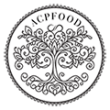

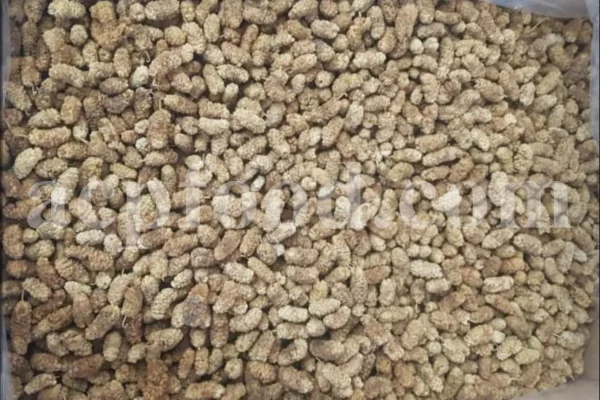
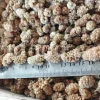
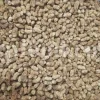
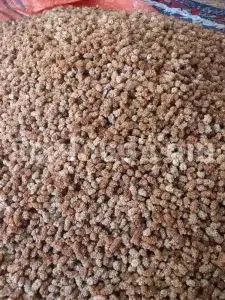
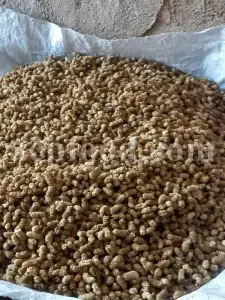
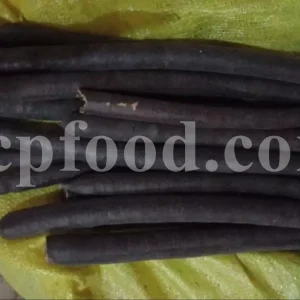
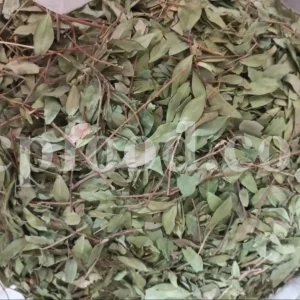
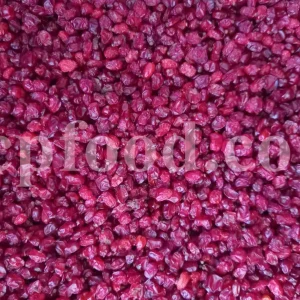
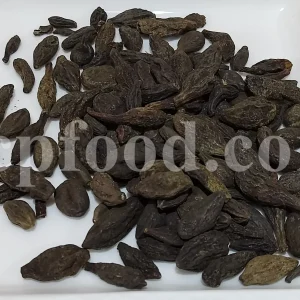
Reviews
There are no reviews yet.